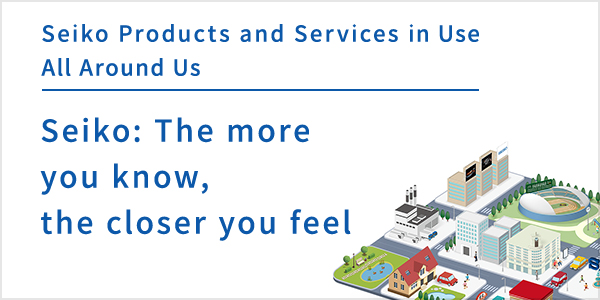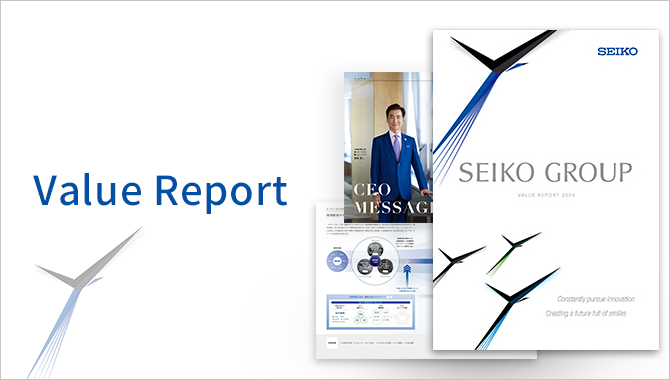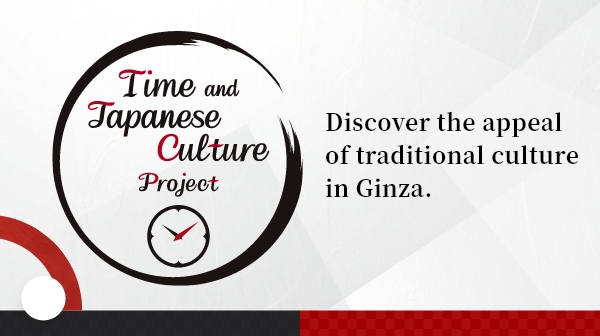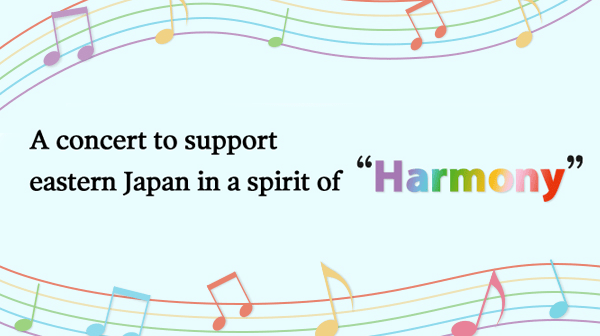This survey marks the first time since starting its annual research that the Company also surveyed consumers in the U.S. and China.
Nine out of ten respondents in China felt pressed for time
and more than 80% responded that this feeling has grown stronger
When asked to what degree respondents felt they were “pressed for time,” 69.2% of respondents in the U.S., 61.8% in Japan, and 90.8% in China indicated that they do feel pressed for time (Fig. 1-1). When asked how much that feeling has changed compared to previous years, 44.2% of respondents in Japan, 52.5% in the U.S., and 85.8% in China answered that their feeling of being pressed for time has grown stronger (Fig. 1-2).
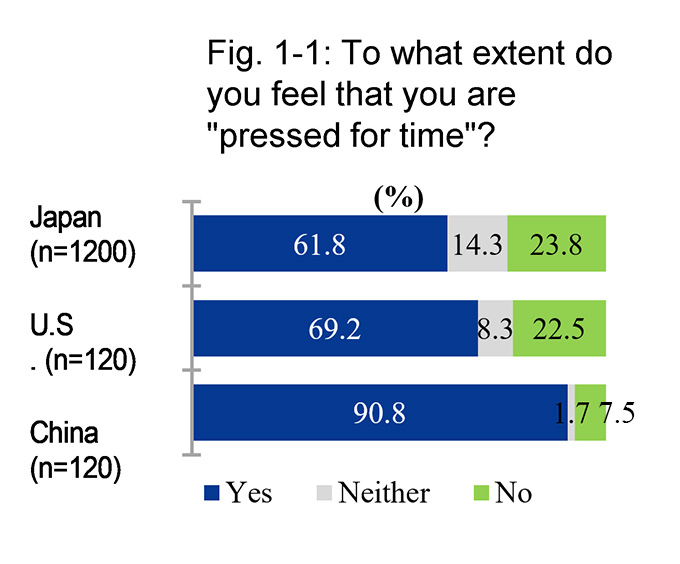
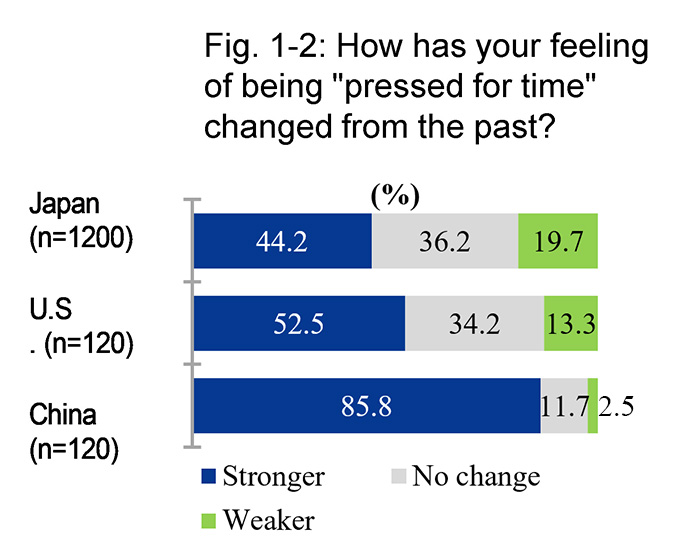
The sense of the speed of time passing roughly doubled for respondents in the U.S. and China, who felt that 2020 went by at roughly three times the actual speed
When asked how quickly time seems to have passed in 2020 in comparison to other years (if other years are considered equal to 1), the results were 2.92 times for U.S. respondents, 2.03 for Japan, and 1.49 for China. It is often said that humans perceive time as passing quickly when looking back on spans of time with few new experiences. The results of this survey indicated that there may be differences between the degree to which this happens in different countries. Similarly, in Japan and China, respondents felt that time passed in 2021 at roughly the same speed as in 2020, at 2.03 times in Japan and 1.68 times in China, but to respondents in the U.S., time seemed to be passing incredibly fast in 2021, at 3.39 times, far above the speed reported in 2020 (Fig. 2).
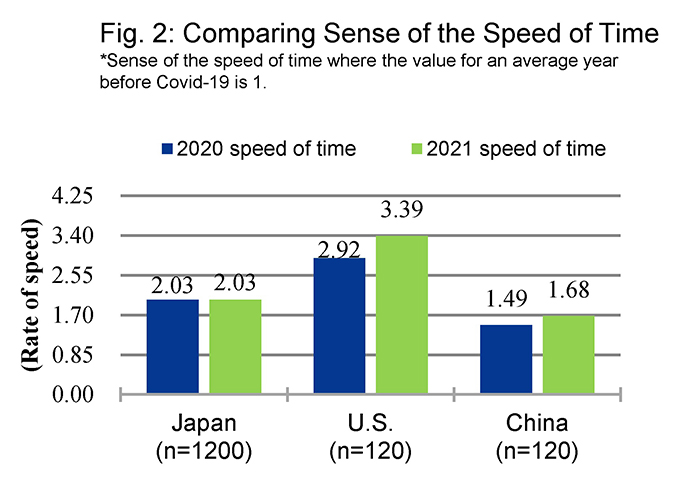
Do the ways people use their time differ by country? Respondents in Japan estimate time needed before acting while respondents in U.S. and China focus on efficiency
When given a list of 17 behaviors related to time and asked to select those that apply to themselves, “I try to do everything efficiently” was the top answer for respondents in the U.S. (83.3%) and China (95.8%). For Japan, the top response was “I estimate the time something will take before doing it” at 68.3% (Fig. 3).
“I use taxis, etc. to save time” was selected by 63.3% of respondents in China and 36.7% of those in the U.S., in contrast to 9.6% in Japan, and the proportions of respondents who selected “I use my time in the mornings for activities” were 59.2% for the U.S., 28.0% for Japan, and 85.8% for China.
The item with the largest difference between Japan and the U.S. was “I get anxious when I have nothing to do,” with the response far greater in the U.S. (67.5%) than in Japan (30.8%); a difference of 36.7 points.
While there are twenty-four hours in a day everywhere in the world, this survey suggests that the ways people use those hours vary greatly from country to country.
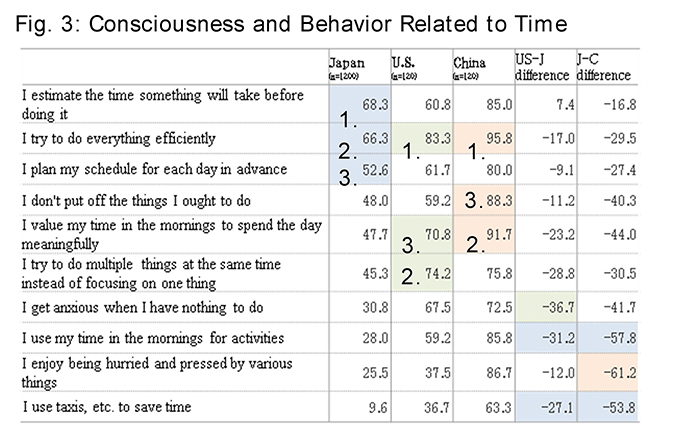
Relative value of time: Japan places higher value on “Off” (non-working) time, China values “On” (working) time, while the U.S. values both equally
Next, the survey asked respondents to assign a monetary value to how much they consider an hour of both their “on and off” time to be worth. The results showed that respondents in the U.S. valued their on time at JPY 8,590 (USD 78.98) and off time at JPY 8,561 (USD 78.71), those in Japan valued their on time at JPY 4,253 and off time at JPY 12,992, and those in China valued their on time at JPY 2,319 (RMB 136.55) and off time at JPY 1,751 (RMB 103.15). Thus, the monetary value of on and off time was approximately the same in the U.S., while in Japan the value of off time was far higher than that of on time, and in China, respondents valued on time more highly (Fig. 4).
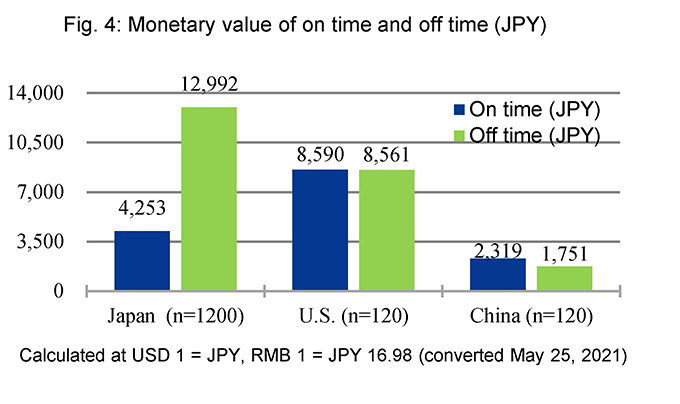
Most valued activities: “hobbies/leisure” in the U.S., “sleep/rest” in Japan, and “working, doing housework, or studying” in China
When respondents were asked to select activities that they value, those in the U.S. indicated a desire to enjoy their private time, ranking “hobbies/leisure” (89.2%) first, followed by “sleep/rest” (88.3%). Similarly, in Japan, respondents also ranked private time as the type they valued most, including “sleep/rest” (76.6%), “hobbies/leisure” (75.7%), and “time spent alone” (73.5%). In contrast, respondents in China ranked “time spent working, doing housework, or studying” (96.7%) highest. These results make sense for China, where on productive time is valued more highly than private time (Fig. 5).
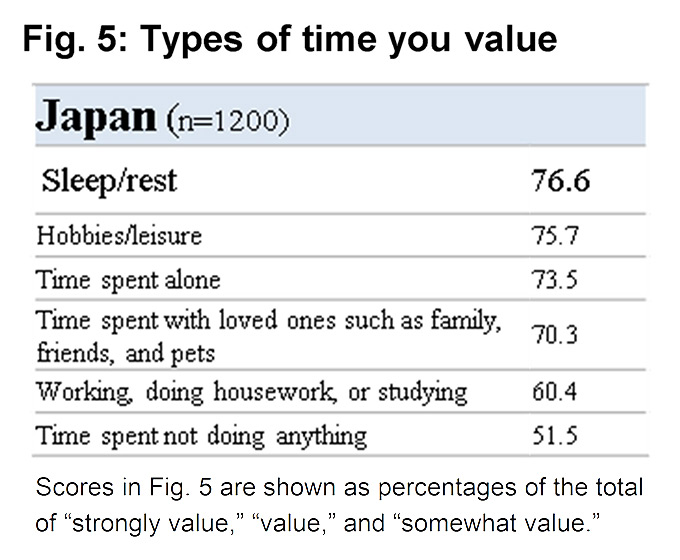
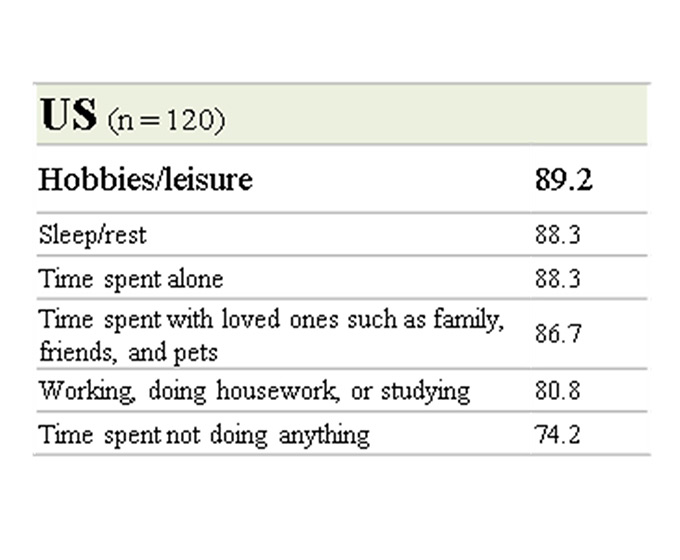
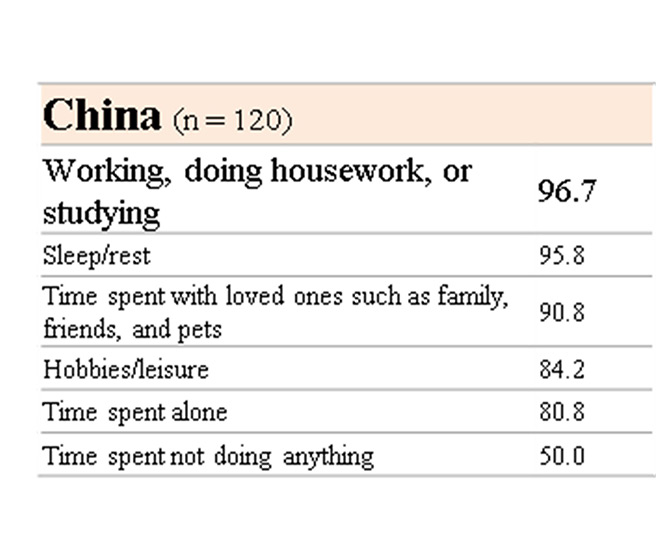
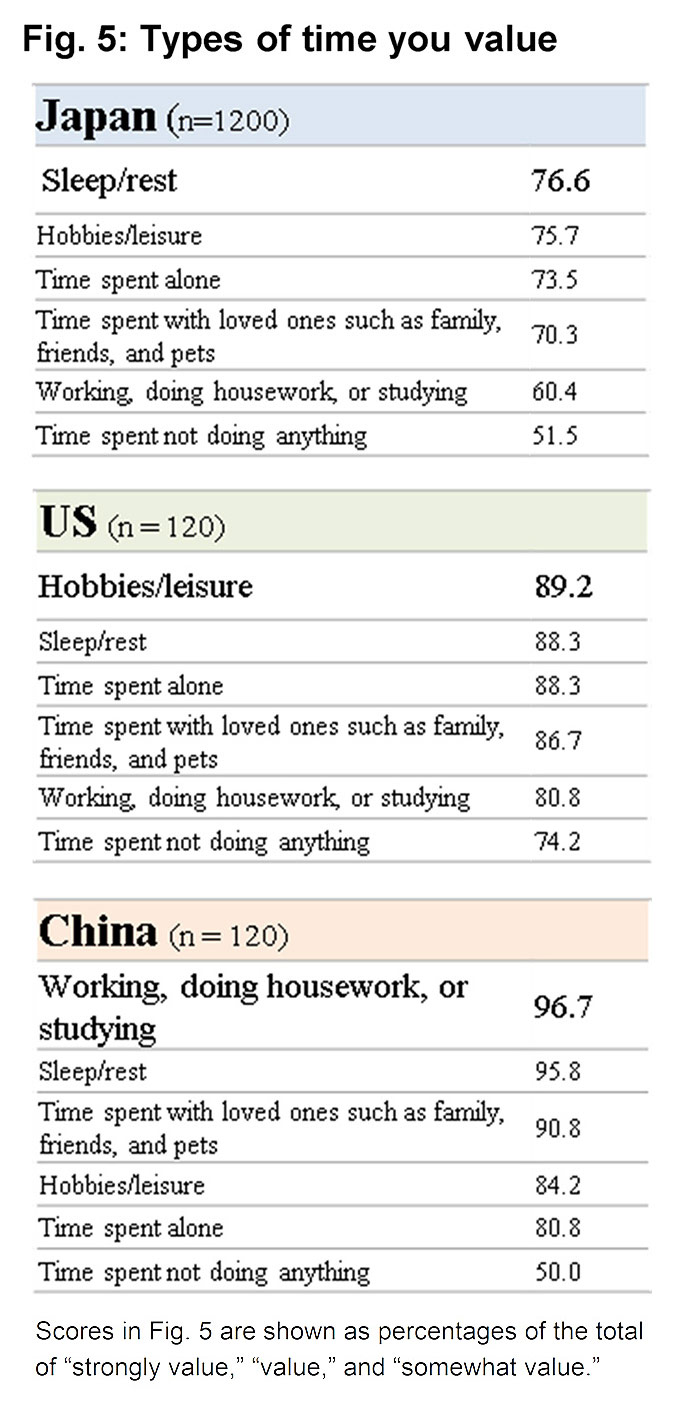
Respondents in China hoped to further improve the efficiency of time use, and those in the U.S. hoped to do the same to a degree, while Japanese attitudes are less clear
The survey asked for opinions about how time is used (Fig. 6).
1. When asked about whether they are conscious about using time efficiently, many in all three countries responded that they are “conscious” of it, with 76.7% of those in China responding to that effect.
2. When respondents were asked if they agree that people who are usually busy should be able to treat themselves during their time off, the proportion of those who said they “agree” with the sentiment was high in all three countries surveyed, but China had both the highest proportion of both affirmative and negative responses.
3. The percentage of respondents who said they “agree” with the trend toward eliminating wasted time by focusing on time management and improving efficiency and productivity was high in all three countries, but was highest in China at 67.5%.
4. While many people in all three countries said they want to optimize the use of their time, in Japan less than half of respondents (42.8%) answered positively, while in China, 66.7% agreed with the idea of optimizing the use of their time.
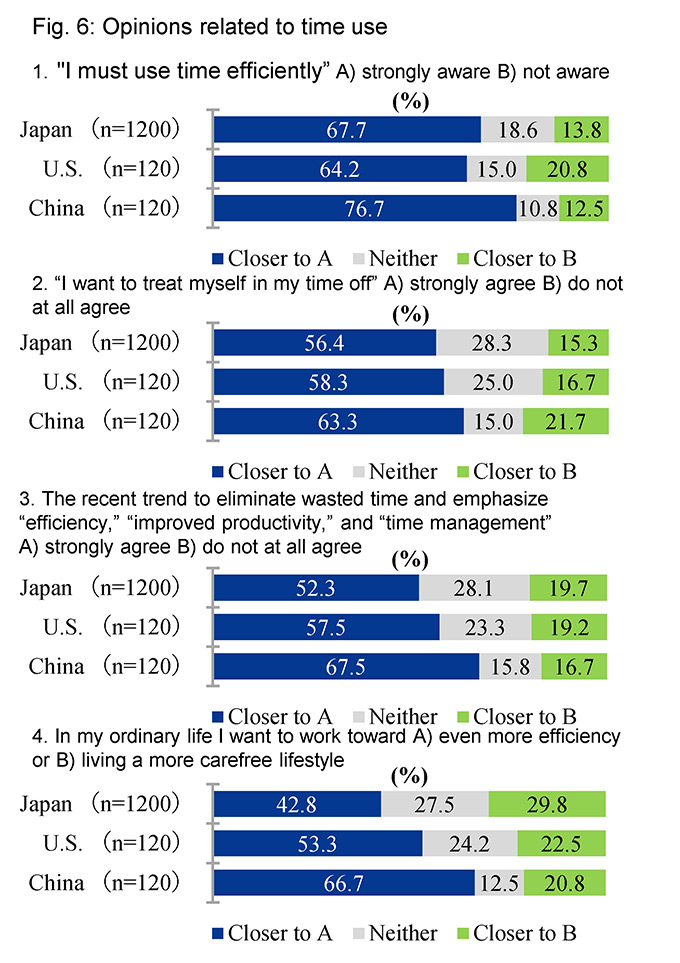
Self-assessment of how well time is used: U.S.: 64.5 points, China: 78.4, Japan: 58.5
U.S. respondents want to “choose freely from the available choices” while people in Japan and China believe “free time comes with responsibility”
We asked respondents to score themselves on a scale of 1 to 100 as to how well they use their time. On average, respondents in the U.S. scored themselves at 64.5 points, those in Japan at 58.5 points, and those in China at 78.4 points (Fig. 7).
Next, the survey asked about respondents’ sense of values with regard to how they use time. This question resulted in a lower score overall for Japan compared to China and the U.S., and seemingly slightly less interest in time in comparison to the other two countries (Fig. 8).
Looking more closely at the results, the top reply for all three countries was “I welcome an increase in time that I can use as I want” with 84.2% in the U.S., 55.6% in Japan, and 88.3% in China, the second-ranking answer was “I think having free time means that I have greater responsibility” in Japan (51.3%) and China (81.7%), indicating that there is a strong tendency to see freedom as coming through a sense of responsibility. The U.S. was the lowest at 60.8%.
Even though the scores in Japan and China were different, their ranking was the same, so while there was a difference in respondents’ self-assessments with regard to time, respondents in both countries had similar perceptions.
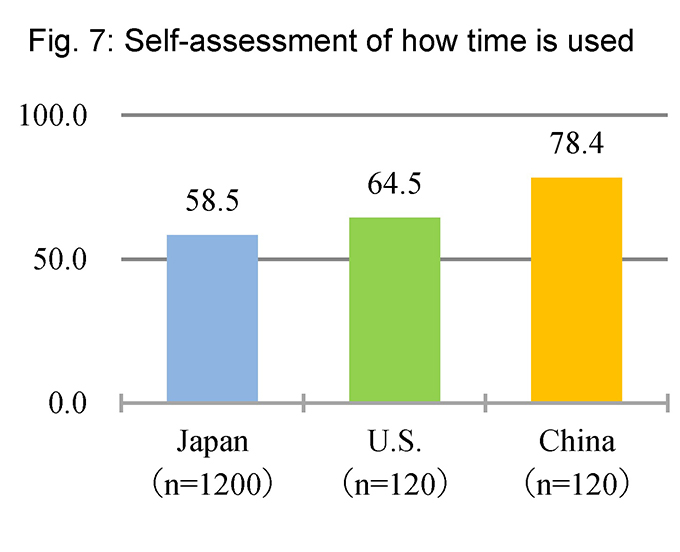
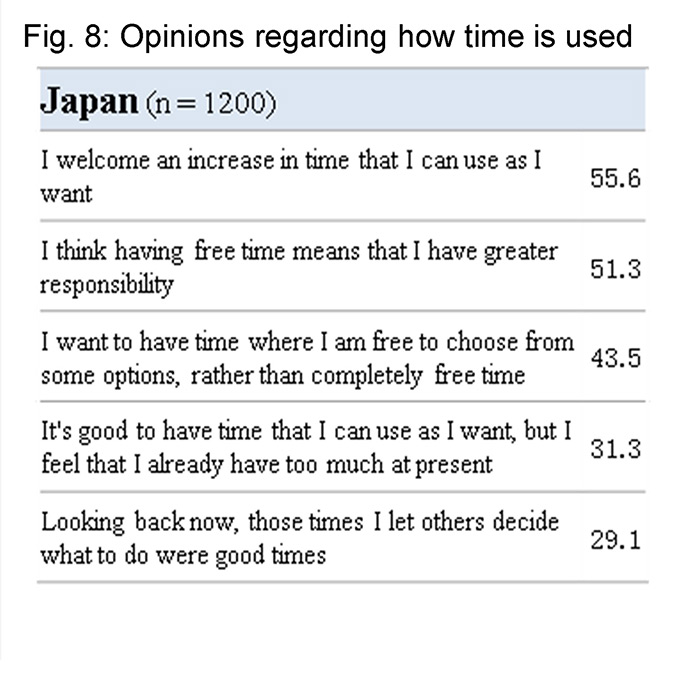
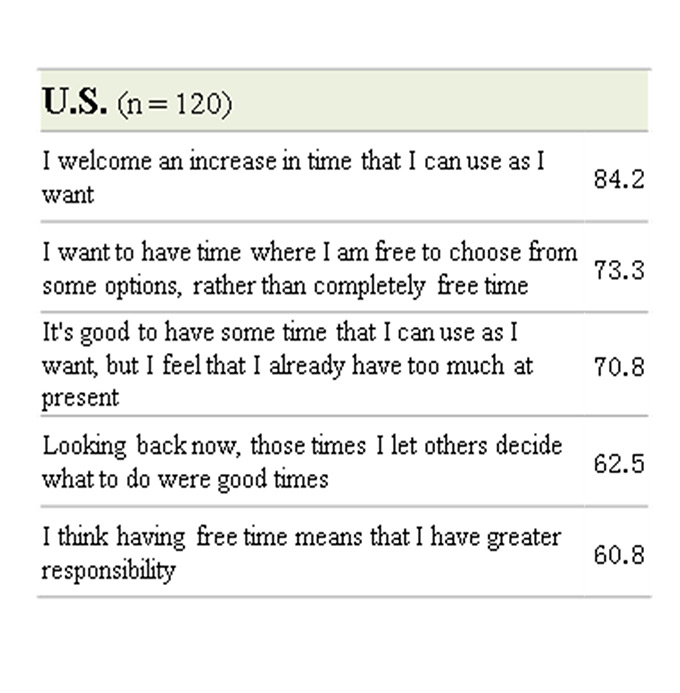
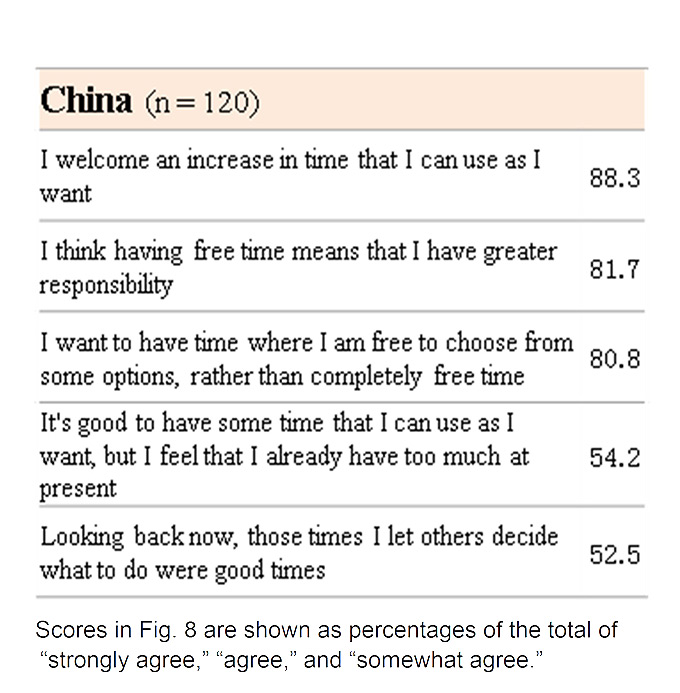
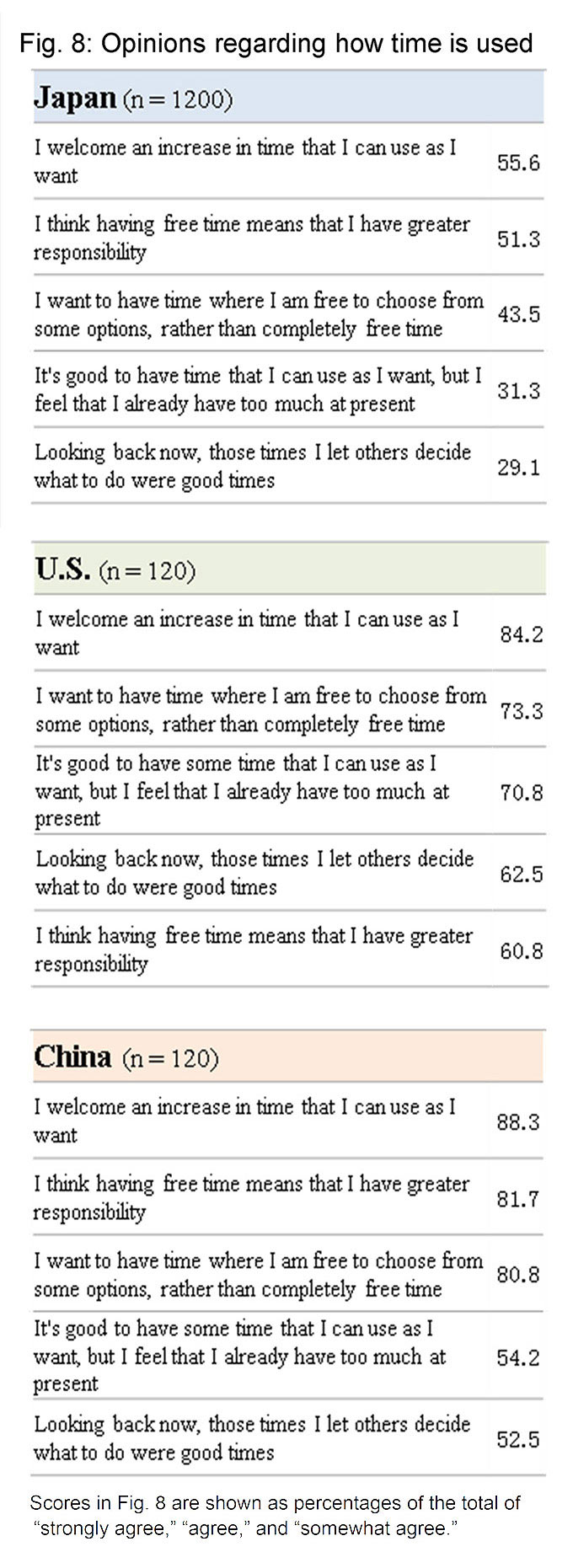
Half of respondents in Japan are considering lifestyle changes due to the Covid-19 pandemic, while 7 in 10 in the U.S. and 8 in 10 in China are considering such changes
When asked whether they are considering making positive changes to their lifestyles due to the Covid-19 pandemic, more than 70% of those in the U.S. and over 80% of those in China said that they are considering such changes, while only about half of Japanese respondents said that they were (Fig. 9).
The different ways in which these countries have dealt with the pandemic, including the progress of vaccinations, may be related to these differences in attitudes.
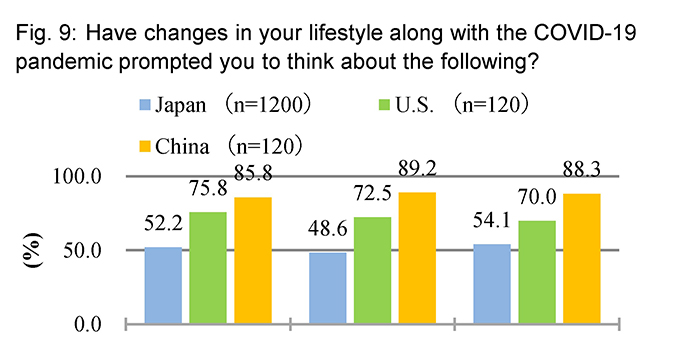
Spending time with a partner after the pandemic
It seems that the first priority for many people after the pandemic is to do something fun with their spouses or partners. When asked what they wanted to do after the pandemic and with whom, the top two answers from respondents in both China and the U.S. were “travel with spouse/partner” and “dine out with spouse/partner.” In China the numbers were 70.0% and 50.0%, respectively, while in the U.S. the numbers were 59.2% and 52.5%. In Japan the top two answers were “dine out with friends” at 55.6% and “travel with spouse/partner” at 40.2% (Fig. 10).
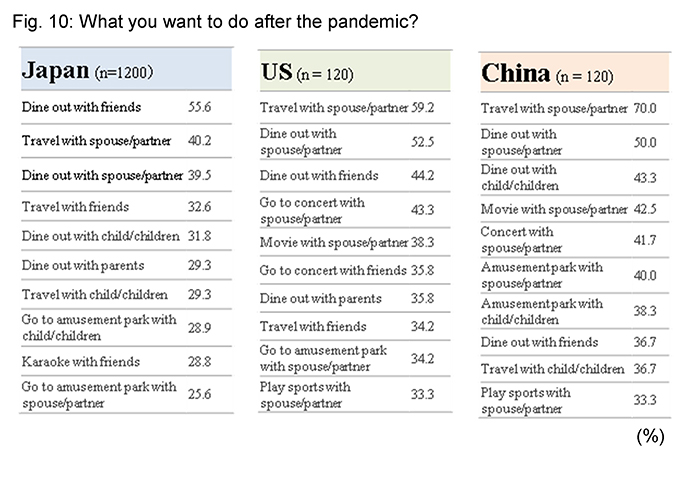
The origins of Time Day
June 10th is Time Day, a Japanese national day first observed in 1920.
It was established to promote greater awareness of time along with improving people’s lives and improving efficiency in the hope of encouraging people to pay more attention to time. The date was chosen because June 10, 671 is the date when Emperor Tenji officially introduced timekeeping in Japan using a water clock.



